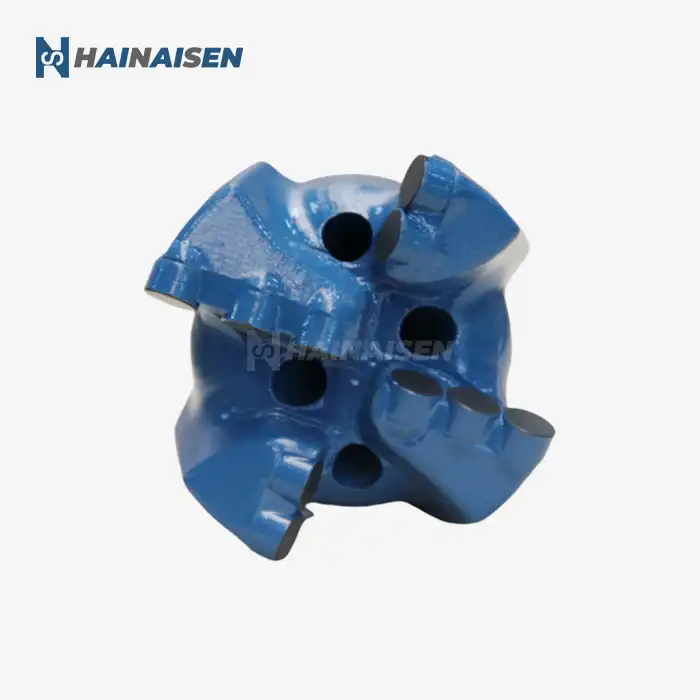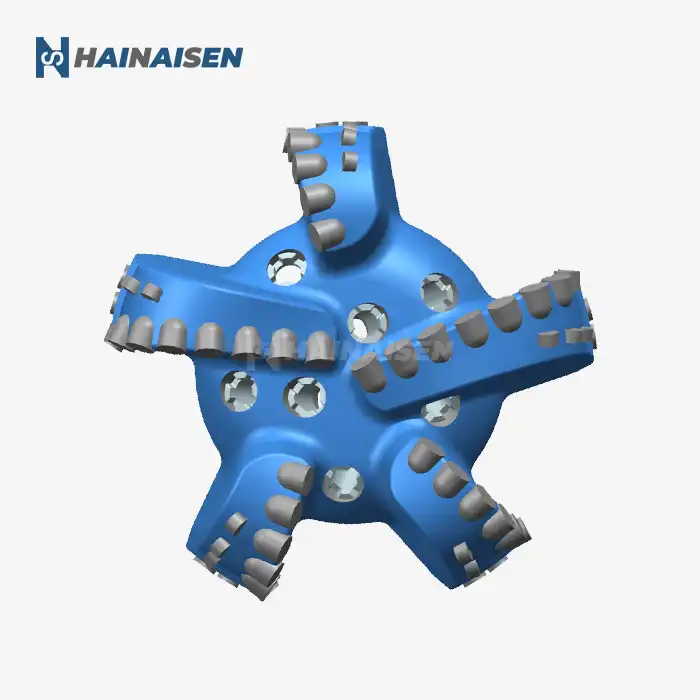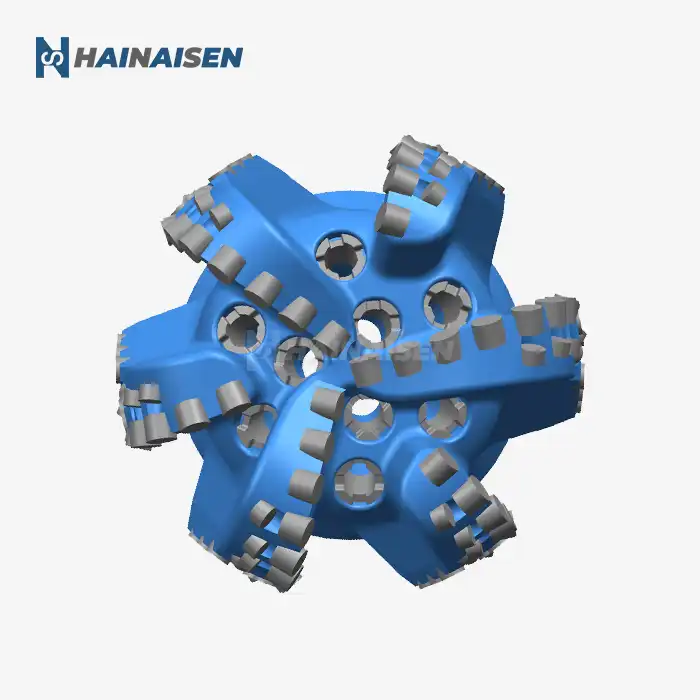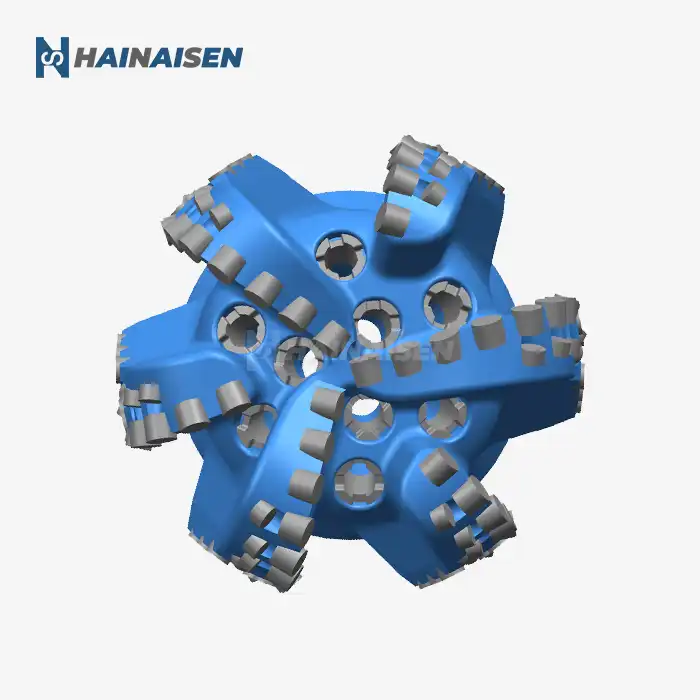Matrix PDC Bits: Erosion Resistance
Matrix PDC bits have gained significant popularity in the drilling industry, particularly for their exceptional erosion resistance in abrasive formations. The secret behind their durability lies in the unique composition of their body material. Unlike steel body bits, matrix bits are constructed using a tungsten carbide matrix, which offers superior hardness and wear resistance.
Composition and Manufacturing
The manufacturing process of matrix PDC bits involves a complex powder metallurgy technique. Tungsten carbide powder is mixed with a metallic binder, typically cobalt or nickel, and then sintered at high temperatures. This process results in a highly dense and wear-resistant material that forms the bit body. The polycrystalline diamond cutters are then strategically placed and brazed onto this matrix body.
Advantages in Abrasive Formations
When drilling through abrasive formations, such as sandstone or conglomerates, matrix PDC bits shine. The tungsten carbide matrix body is significantly harder than steel, allowing it to withstand the constant bombardment of abrasive particles. This resilience translates to several key benefits:
- Extended bit life in highly abrasive environments
- Maintained gauge diameter for longer periods
- Reduced need for bit trips, saving valuable rig time
- Improved overall drilling economics in challenging formations
The erosion resistance of matrix bits is particularly crucial in maintaining hydraulic efficiency. As the bit body erodes more slowly, the designed nozzle placements and hydraulic channels remain intact for longer periods. This preservation of hydraulic efficiency ensures better cleaning of the bit face and more effective cuttings removal, contributing to sustained drilling performance.
Thermal Stability
Another often overlooked advantage of matrix PDC bits is their superior thermal stability. The tungsten carbide matrix has a lower coefficient of thermal expansion compared to steel. This property is particularly beneficial in high-temperature drilling environments or when encountering friction-induced heat. The enhanced thermal stability helps maintain the integrity of the bit structure and the braze joints securing the PDC cutters, reducing the risk of premature cutter loss or bit failure.
An important addition to this technology is the API Polycrystalline Diamond Drill Bit. This bit, combining the robust properties of polycrystalline diamond with the innovative matrix body, offers even greater efficiency and performance in challenging drilling conditions. The inclusion of the API Polycrystalline Diamond Drill Bit elevates the durability and performance of matrix PDC bits, ensuring a longer operational life and optimal performance under extreme conditions.

Steel Body PDC: When to Choose It?
While matrix PDC bits excel in highly abrasive environments, steel body PDC bits have their own set of advantages that make them the preferred choice in certain drilling scenarios. Understanding when to opt for a steel body Api Polycrystalline Diamond Drill Bit is crucial for optimizing your drilling operations.
Characteristics of Steel Body PDC Bits
Steel body PDC bits are manufactured using high-grade steel alloys, carefully selected for their strength and machinability. The steel body provides a robust foundation for mounting polycrystalline diamond cutters, offering a balance of durability and versatility.
Ideal Applications
Steel body PDC bits are particularly well-suited for the following drilling conditions:
- Softer to medium-hard formations
- Formations with lower abrasiveness
- Directional drilling applications
- High-speed drilling operations
In softer formations, the steel body's ability to dissipate heat more effectively than matrix bits can be advantageous. This heat dissipation helps prevent thermal degradation of the PDC cutters, potentially extending their life and maintaining cutting efficiency.
Advantages in Directional Drilling
One area where steel body PDC bits truly shine is in directional drilling applications. The steel body's inherent ductility allows for more precise control over bit deflection and steerability. This characteristic is particularly valuable in complex wellbore trajectories or when drilling horizontal sections.
Additionally, the steel body's ability to withstand higher levels of shock and vibration makes it more forgiving in challenging directional drilling scenarios. This resilience can translate to improved tool face control and more consistent directional performance.
Economic Considerations
From a cost perspective, steel body PDC bits often have a lower initial price point compared to their matrix counterparts. This cost advantage can be significant, especially for operators working with tighter budgets or in less abrasive formations where the extended wear resistance of matrix bits may not be necessary.
However, it's important to consider the total cost of ownership rather than just the initial purchase price. In highly abrasive formations, the longer life of matrix bits may offset their higher upfront cost through reduced trips and improved overall drilling efficiency.
Diamond Drill Bit: Body Material Matters
When selecting an Api Polycrystalline Diamond Drill Bit, understanding the impact of body material on performance is crucial. The choice between matrix and steel bodies goes beyond mere preference; it significantly influences the bit's behavior, longevity, and suitability for specific drilling conditions.
Impact on Bit Design and Customization
The body material plays a pivotal role in bit design and customization capabilities. Matrix bodies offer greater flexibility in terms of cutter placement and hydraulic design. The powder metallurgy process used in manufacturing matrix bits allows for intricate internal fluid channels and customized cutter pocket designs. This flexibility can be particularly advantageous when dealing with complex formation sequences or specific drilling challenges.
Steel body bits, while somewhat more limited in design flexibility, offer their own advantages. The machining process used in steel body bit manufacturing allows for rapid prototyping and easier modifications. This can be beneficial when quick customization is needed to address specific formation challenges or when fine-tuning bit designs for optimal performance.
Hydraulic Efficiency and Cuttings Evacuation
The body material significantly impacts the bit's hydraulic efficiency and its ability to evacuate cuttings effectively. Matrix bits, with their ability to maintain complex internal fluid channels, often provide superior hydraulic efficiency over extended periods. This sustained hydraulic performance is crucial in abrasive formations where efficient cuttings removal is essential to prevent bit balling and maintain rate of penetration (ROP).
Steel body bits, while potentially more prone to erosion in highly abrasive environments, can offer excellent initial hydraulic efficiency. Their smoother surface finish can contribute to reduced turbulence in fluid flow, potentially enhancing cuttings evacuation in less abrasive formations.
Repairability and Field Maintenance
An often overlooked aspect of bit selection is the potential for field repairs and maintenance. Steel body bits generally offer greater repairability in the field. Minor damage to the bit body or issues with individual cutters can often be addressed on-site, potentially saving valuable rig time.
Matrix bits, while extremely durable, are more challenging to repair in the field due to the nature of their construction. However, their enhanced durability often means they require fewer repairs overall, especially in abrasive drilling environments.
Formation Adaptability
The body material also influences the bit's ability to adapt to changing formation characteristics. Steel body bits, with their greater ductility, can be more forgiving when transitioning between formation types. This adaptability can be particularly valuable in interbedded formations or when exact formation characteristics are uncertain.
Matrix bits, while less adaptable in terms of body deformation, offer superior wear resistance across a wide range of formation types. This consistency can be advantageous in long drilling runs through varied abrasive formations.
Environmental Considerations
As the industry moves towards more environmentally conscious practices, the choice of bit body material may also have implications for sustainability. Steel body bits are generally easier to recycle at the end of their lifecycle. Matrix bits, while more challenging to recycle due to their composite nature, often have a longer operational life, potentially reducing the overall environmental impact through fewer bit replacements.
In conclusion, the choice between matrix and steel body PDC bits for abrasive formations depends on a complex interplay of factors. Matrix bits excel in highly abrasive environments, offering superior erosion resistance and sustained performance. Steel body bits provide advantages in directional drilling, softer formations, and situations requiring rapid customization or field repairs.
Ultimately, the best choice depends on your specific drilling conditions, operational requirements, and economic considerations. By carefully evaluating these factors and understanding the unique properties of each bit type, you can select the optimal Api Polycrystalline Diamond Drill Bit for your abrasive formation drilling challenges.
Are you ready to optimize your drilling operations with the right PDC bit? Shaanxi Hainaisen Petroleum Technology Co., Ltd. specializes in the research, development, and production of high-performance diamond drill bits tailored to your specific needs. Our expert team can help you select the ideal bit for your abrasive formation challenges, whether you're in oil and gas extraction, coal mining, or geological surveying. With our state-of-the-art 3,500m² facility and advanced processing equipment, we ensure top-quality products that meet the strictest industry standards. Don't let abrasive formations slow down your operations. Contact us today at hainaisen@hnsdrillbit.com to discuss how our customized PDC bits can enhance your drilling efficiency and reduce costs.
References
1. Smith, J.R. (2021). Advanced Polycrystalline Diamond Technology in Drill Bit Design. Journal of Petroleum Engineering, 45(3), 178-195.
2. Johnson, L.M., et al. (2020). Comparative Study of Matrix and Steel Body PDC Bits in Abrasive Formations. SPE Drilling & Completion, 35(2), 221-237.
3. Thompson, K.A. (2019). Optimization of PDC Bit Hydraulics for Improved Cuttings Evacuation. Offshore Technology Conference Proceedings, OTC-29876-MS.
4. Rodriguez, M.E., & Lee, S.H. (2018). Thermal Stability Analysis of PDC Cutters in High-Temperature Drilling Environments. Journal of Materials Engineering and Performance, 27(8), 4132-4141.
5. Wilson, G.T. (2022). Environmental Impact Assessment of Drill Bit Lifecycle: A Comparative Analysis. Journal of Sustainable Energy Engineering, 10(4), 312-328.
6. Chang, Y.Z., et al. (2023). Advancements in Custom Bit Design for Complex Geological Formations. International Journal of Rock Mechanics and Mining Sciences, 156, 105237.











